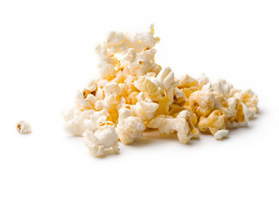Vertical Ray of the Sun: Green Papaya Salad
Year Released: 2001
Directed by: Tran Anh Hung
Starring: Tran Nu Yen-Khe, Nguy Nhu Quynh, Le Khan
(PG-13, 112 min.)

"Everyone is a moon and has a dark side, which he never shows to anybody." Mark Twain
Take your favorite soap opera, whisk it over to Viet Nam, and produce it with a Masterpiece Theater eye for detail. Then throw in an edgy structure to keep your audience deliciously off balance, and you have a film that leaves you as pleasantly light headed as that second glass of bubbly.
The film dances around the lives of three sisters in contemporary Hanoi. Lien (Tran Nu Yen-Khe), the youngest, lives with her twin brother Hai (Quang Hai), an aspiring actor. Suong (Nguy Nhu Quynh) runs a café where Lien waits on tables. She is married to a photographer who specializes in biological specimens. Khanh (Le Khanh), the middle sister, is married to a writer just finishing his first novel.
Vertical Ray of the Sun is not so much a narrative as a series of vignettes that tease, provoke, and perplex. The catlike Lien stretches as she rises from her bed, while brother Hai approaches the day with push ups. Like a cat that sidles up to you leg, even as you are walking. Lien flirts with Hai, suggesting that others mistake them for a couple. His answers are right out of brother scripture:
Knock it off. Go wash up. Don’t talk garbage.
The other sisters also have playful sides; they banter while fixing the traditional feast for the one-year memorial for their mother’s death. As they peel off the skin of the chicken’s feet, Khanh comments that this is her favorite part:
This is my favorite part. - It's strange.
Satisfying and disgusting at the same time.
It's true. We women are condemned to disgusting things.
In the old days, we couldn't touch a man's head.
That noble part of the body...
must not be soiled by our hands.
But men have always liked and allowed us...
to touch another thing.
Exactly.
So is that thing considered noble?
We must conclude that it isn't since we're allowed to touch it.
It must be classified as a disgusting thing.
I don't find it so very disgusting.
I’ll leave the next part about her culinary fantasy to your imagination.
The men, on the other hand, engage in a conversation about photography. Quoc, Suong’s husband prefers his botanical photographs of plants to his portraits of faces. The plants are where he finds tranquility.
There you have it. The girls pluck a chicken and their sensual fantasies explode; the men look at still life photos and search for tranquility.
But tranquility here is only on the surface. As we look more closely at each relationship, we find guilty secrets and unvoiced suspicions, double lives and double-dealing. And none of it really gets unraveled or resolved here, probably a lot more like real life than our cinematic experience.
I might add that the audience’s tranquility will suffer a bit here, especially trying to figure out who is who in at least the first half of the film, a factor not helped by three actresses that look quite a bit alike, the energy lost dealing with subtitles, some of which fade into the white parts of the screen, and an extra set of lovers who seem thrown in out of nowhere.
On the other hand, the cinematography is splendid. One could get lost in the aqua blue interiors, the jingling beaded doorways, and the sound of rain pouring from the sky or from a painted pitcher. One critic, frustrated with the enigmatic plot, abandoned it altogether and wallowed in the visuals alone, comparing them to an opium dream.
The artists here – novelist, actor, and photographer -- are all struggling. The novelist is caught in writers’ bock, the actor trying to make it off the cutting room floor, the photographer struggling for happiness. A fisherman offers some advice, at first short and simple, and then like the emanations after a rock is tossed into a pond, the circle expands and washes over itself in a Zen paradox:
What do you do when sadness overwhelms you?
I go down to the village to look for a woman...
and I snuggle up to her.
One of them is sweet and she likes me a lot.
When I'm sad I send for her...
and I lie down beside her.
That warm, damp flesh...
those soft hairs--
All of a sudden...
a terrible pain crosses my chest.
Then I thank heaven and I fall asleep.
If I have the bad luck to wake in the night...
and find her at my side...
the sadness I feel then, nothing can make it go
away.
If you can enjoy life’s beauty without worrying about its answers or bask in a single vertical ray of the sun without asking for a cloudless day, you will enjoy the sad sweetness of this film.
—Kathy Borich
Film-Loving Foodie
Like everything else in the film, the rituals surrounding food are presented with grace and detail. It’s not just the preparation itself, but the discussion of it is paramount as well. A great deal of weight is given to the distinction between shallots and chives, a distinction, sadly, writers do not understand, their knowledge being limited to that of the human soul. Thus, Khanh’s novelist husband is saved a trip to the market.
Screenwriter/director Tran Anh Hung is also known for his earlier The Scent of Green Papaya, "a tranquilly beautiful film about a lost Vietnam, a peaceful, orderly place not yet touched by wartime.” In a tribute to that earlier work, I have found a delightful recipe for Green Papaya Salad, using, of course, our aforementioned shallot.
Here's a delicious soup to go along with it: Vietnamese Beef Pho
Green Papaya Salad
- 1 small unripe green papaya (peeled & shredded thinly)
- 2 small carrots (peeled & shredded thinly)
- dash of salt and pepper
- lettuce leaves
- 1 tbsp roasted peanuts (crushed)
Dressing
- 1 clove garlic (chopped fine)
- 1 shallot (chopped fine)
- 2 small red chillies (de-seeded & chopped fine)
- 2 tsp brown sugar
- 3 tbsp lime juice
- 2 tbsp fish sauce (substitute with water to make it vegan)
In a bowl, mix the shredded papaya and carrot with salt and pepper
Using a flat plate, arrange the lettuce leaves and pile the papaya and a
carrot on top
How to make the dressing:
Using a mortar and pestle, pound all the ingredients for the dressing with
the exception of the lime juice and fish sauce.
Add in the lime juice and fish sauce (if using) to make the dressing.
Garnish the salad with the crushed peanuts.
Just before serving, pour the dressing over it.
Do not toss or mix the salad till ready to serve.
Recipe Source: geocities.com



 Rainy Day Rentals
Rainy Day Rentals